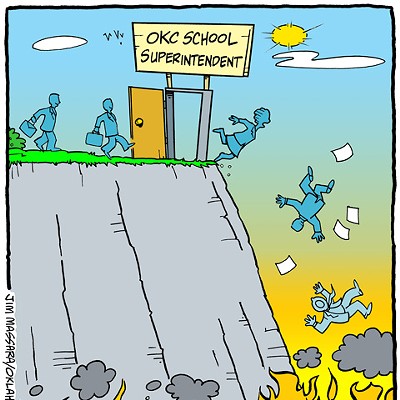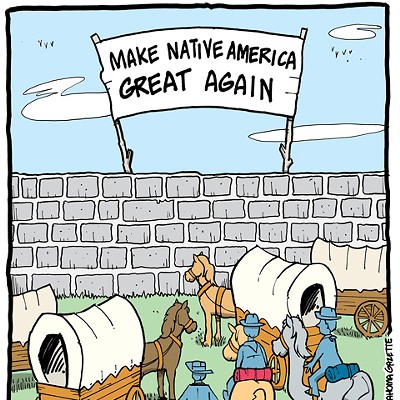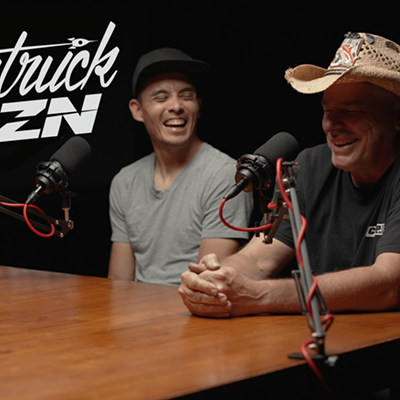All this opt-out legislation at the state Capitol this year ignores the fact that Oklahoma's history shows the state is heavily dependent on the federal government for its viability. Oklahoma has been rescued by federal money and policies since statehood.
Without the federal government's continued support, Oklahoma would resemble a small, impoverished Third World country.
So why is there all this anti-federal government rhetoric at the Capitol? Both the Senate and House have voted to opt out of national health care mandates plan passed in Washington. The Oklahoma Senate has voted to opt out on federal hate crimes legislation that gives protection to people based on sexual orientation and gender identity.
The constitutionality of the legislation is obviously a looming question. Some of the legislation's supporters will use the Tenth Amendment to argue for its overall legality, perhaps hoping for a larger national battle for states' rights. Other conservative states are also considering opt-out legislation on health care under the Tenth Amendment banner.
But the larger issue here should be how the legislation contradicts and ignores Oklahoma's reliance on the federal government, both historically and now.
Since gaining statehood in 1907, Oklahoma has needed the federal government for help. After the state flourished at the turn of the 20th century, an extended drought and the Great Depression brought growth here to a screeching halt.
From 1930 to 1950, the state population actually dropped by 6.9 percent.
The word "Okie" became pejorative, but slowly and steadily, the federal government helped revive the state by instilling and paying for soil and water conservation programs, including creating windbreaks to prevent erosion.
The federal government, through its Army Corps of Engineers, created new man-made lakes, including Lake Texoma and Lake Eufaula. The state, with its new lakes that provided recreation and tourism opportunities, started to grow again.
After World War II and partly because of the federal GI Bill, Oklahoma's higher educational systems began to expand. During the 1980s, after the collapse of Penn Square Bank, the federal government came into the state during the massive savings and loan crisis, closed or restructured these institutions and saved deposits.
After the 1995 bombing of the Alfred P. Murrah Federal Building, the feds built a $40 million federal campus with enhanced security features. The federal government provided much-needed relief through the Federal Emergency Management Agency after the May 3, 1999, tornado in the Oklahoma City area. It also provided help after the December 2007 ice storm and the 2009 Christmas Eve blizzard.
Right now, 1,170,520 Oklahomans are receiving food assistance from the federal Supplemental Nutrition Assistance Program (the new name for food stamps) or Medicaid, according to a recent media report. That's nearly a third of the state population. The state has also received significant amounts of federal money for transportation projects and college student grants. Recent federal stimulus money has prevented a complete state budget disaster here.
From 1986 to 2005, Oklahoma received from $1.12 up to $1.46 back for every dollar it gave to the federal government, according to a 2007 Tax Foundation report. But to listen to politicians, Oklahoma would have been better off without the extra help. Get real.
Hochenauer is an English professor at the University of Central Oklahoma and the author of the Okie Funk blog.












